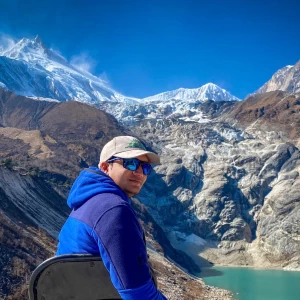Nepal offers everything from adventure to luxury or luxury in adventure. With tonnes and tonnes of places to visit, we present you the basic idea on how to travel Nepal like a pro.
How To Travel Nepal: An Ultimate Guide To Visit Nepal in 2024 and 2025
Table of Contents
Nepal is home to Mount Everest and eight of the world’s tallest peaks. The country offers diverse landscapes, from jungles to Himalayan ranges.
Yet Nepal is not just about the mountains. When visiting Nepal, explore its unique heritage sites and vibrant festivals. A well-organized Nepal tour can enhance your travel experience by offering a variety of travel experiences, such as cultural, adventure, and nature tours.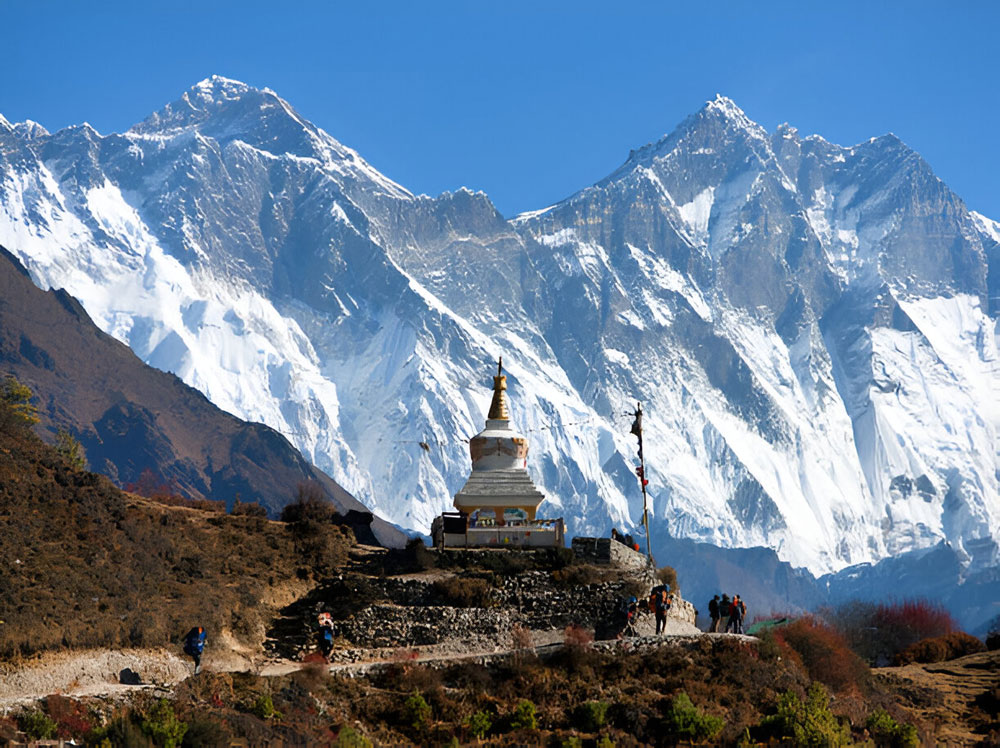
Nepal is a beautiful country with tall mountains and rich culture. It is famous for its warm hospitality and natural beauty. This guide will help you understand how to travel Nepal easily. Whether you’re visiting Nepal for trekking or cultural experiences, there’s something for everyone.
Getting to Nepal
Travelling to Nepal is easy with flights to Kathmandu’s Tribhuvan International Airport. This makes it a crucial hub for international travellers. You can also reach Nepal by bus from India, with multiple border crossings available.
By Air
There are recently 3 International airports in Nepal; Tribhuvan International Airport (Kathmandu), Pokhara International Airport (Pokhara), and Gautam Buddha International Airport (Bhairahawa). However, Tribhuvan International Airport is currently Nepal's only international airport active. Stopovers are necessary if flying from far-off locations like Europe or North America.
The maximum number of tourists want to land in Kathmandu, the capital city to start their Nepal journey.
There are direct international flights from Doha, Dubai, New Delhi, Bangalore, Mumbai, Calcutta, Bangkok, Chengdu, and Singapore. Thus, any traveller from other countries who wants to visit Nepal will have to adjust to connecting flights from the mentioned cities.
 After getting to Nepal, the major cities in the country like Pokhara, Bhairahawa, Chitwan, and Nepalgunj are accessible through domestic flights. Not only that, even remote lands like Lukla, Jomsom, Simikot, Mugu, and many more are accessible through airports.
After getting to Nepal, the major cities in the country like Pokhara, Bhairahawa, Chitwan, and Nepalgunj are accessible through domestic flights. Not only that, even remote lands like Lukla, Jomsom, Simikot, Mugu, and many more are accessible through airports.
However, these sector flights of remote lands depend upon the weather conditions. For example, while going to Everest Base Camp, you use the Lukla flight. Yet, there are so many flight cancellations due to bad weather. However, the mountain weather is always unpredictable. Thus, these trips are conducted having the fingers crossed that the flight is not cancelled.
From there onwards, if it is trekking, the case is different. Yet, if it is a travel, road transportation is a must.
By Road
The easiest roadway to get to Nepal is via the border with India. There are several checkpoints in Nepal to enter from India by road with an on-arrival visa. Similarly, there is direct bus transport either up to the border of Nepal and India or through the borders to Kathmandu. One of the easiest accessible borders for any foreign traveller to Nepal is from Sunauli.
If you do not want a public vehicle, then private transportation is also available upon request.

While you are inside Nepal there are several road options available. If you are in the city area, the cab with a yellow cover on top is always available and easily affordable. Some travellers are also interested in hiring motorbikes and roaming the alleys of the city.
Nepal transportation offers various options for travelling within the country. Buses are the primary means of intercity travel, but they come with challenges and safety concerns. For smaller groups, micro-buses are a viable alternative. In urban areas like Kathmandu, it is recommended to use taxis and bicycles for easier navigation.
Now, with private transportation, trips become more easier. You can easily get to stop at many places on your own, capture pictures, live with the locals and get the best out of Nepal.
Additionally, there are so many underrated places in Nepal where you must have to get a Private Vehicle to reach.
Moreover, bus transportation is another preferable option. Major places in Nepal are now accessible by roads and local buses. However, the trekking routes are staying intact due to their value with just less road access.
Things to do in Nepal
In Nepal, trekking in the Himalayas, visiting ancient temples, and exploring wildlife in national parks are popular activities. Additionally, rafting in the Karnali River and experiencing local festivals offer unique adventures.
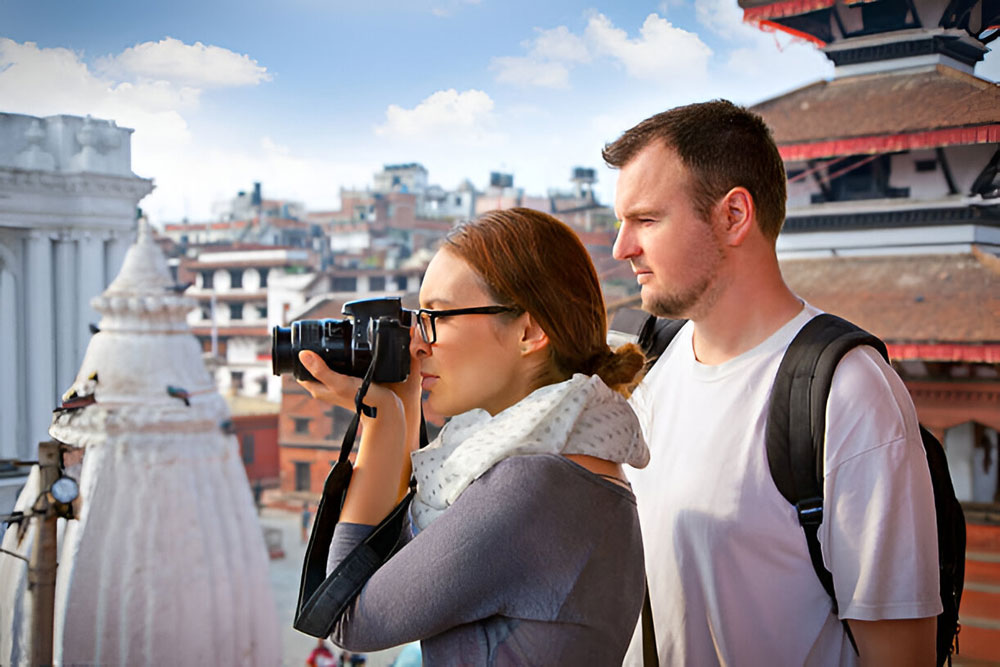
Tours
Nepal offers diverse tours for all types of travellers. A well-organized Nepal tour provides a variety of travel packages that cater to different interests such as culture, adventure, and nature. From cultural sites to natural wonders, there’s something for everyone.
You can enjoy luxury tours in Nepal or opt for adventurous trips. The country is rich in history and natural beauty, making every tour unique.
Kathmandu Tours
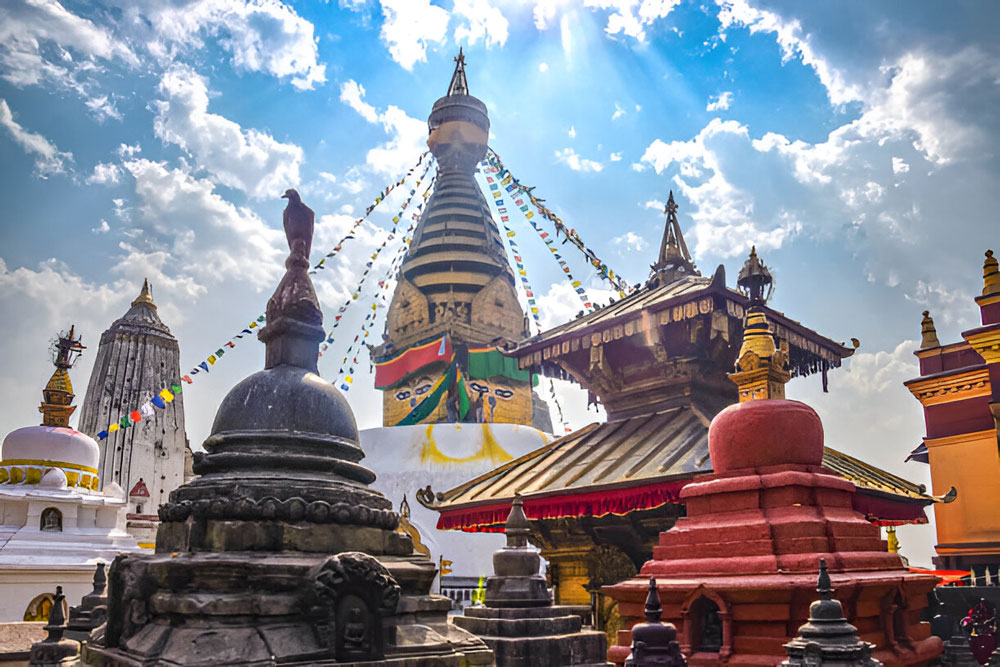
Kathmandu is rich in UNESCO World Heritage Sites. It has a total of 7 World Heritages out of 10 inside Nepal.
Travelers can experience vibrant Kathmandu culture at these sites. Pashupatinath Temple offers a chance to see Hindu rituals and meet sadhus. Boudhanath Stupa allows for observing Tibetan monks and spinning prayer wheels. Swayambhunath Stupa combines spirituality with fun, featuring resident monkeys and city views.
Kathmandu's cuisine delights food lovers. Local markets offer traditional dishes like momos and dal bhat, while Thamel has numerous restaurants serving both local and international foods. Food tours offer a great way to savour the city’s culinary delights.
National Park Tours
Nepal's national parks like Chitwan, Bardiya, and Koshi Tappu are perfect for wildlife enthusiasts.
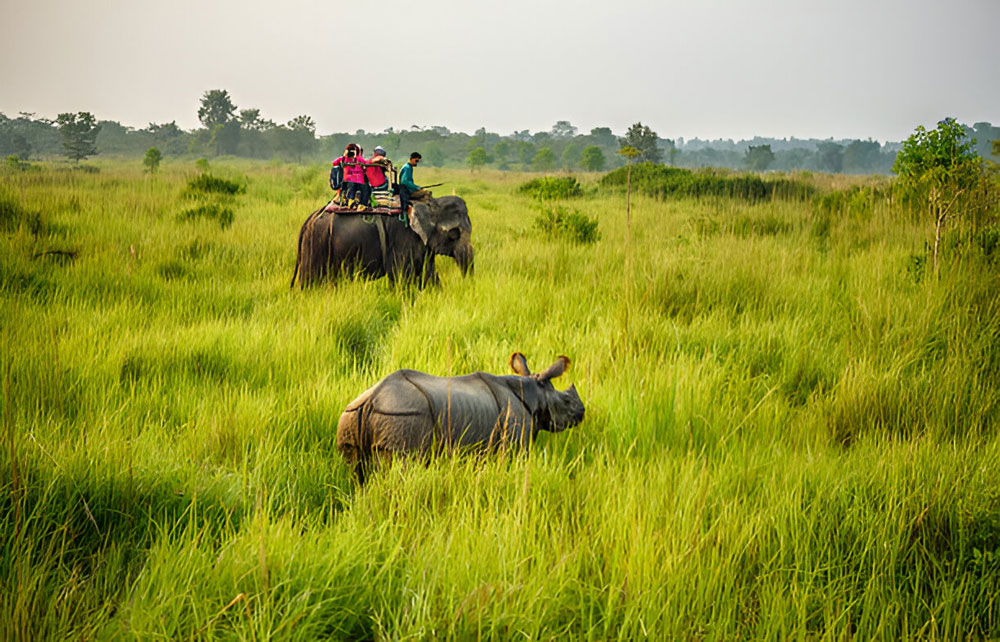
In Chitwan National Park, explore the jungle via jeep rides. Spot the one-horned rhinoceros, Bengal tigers, and Asian elephants. Canoeing on the Rapti River reveals gharial crocodiles and colourful kingfishers. Cultural dance performances by the Tharu people add a unique touch.
Bardiya National Park provides a quieter experience with fewer visitors and better chances to see Bengal tigers. Guided walks and jeep safaris may reveal greater one-horned rhinoceroses, wild elephants, and swamp deer. Visits to nearby villages offer a glimpse into local traditions.
Koshi Tappu Wildlife Reserve is a haven for bird watchers. The wetlands attract species like the Bengal florican and Sarus crane. Guided bird-watching tours and opportunities to see water buffalo, wild boar, and the endangered Gangetic dolphin make this reserve a special destination.
Mustang Tours
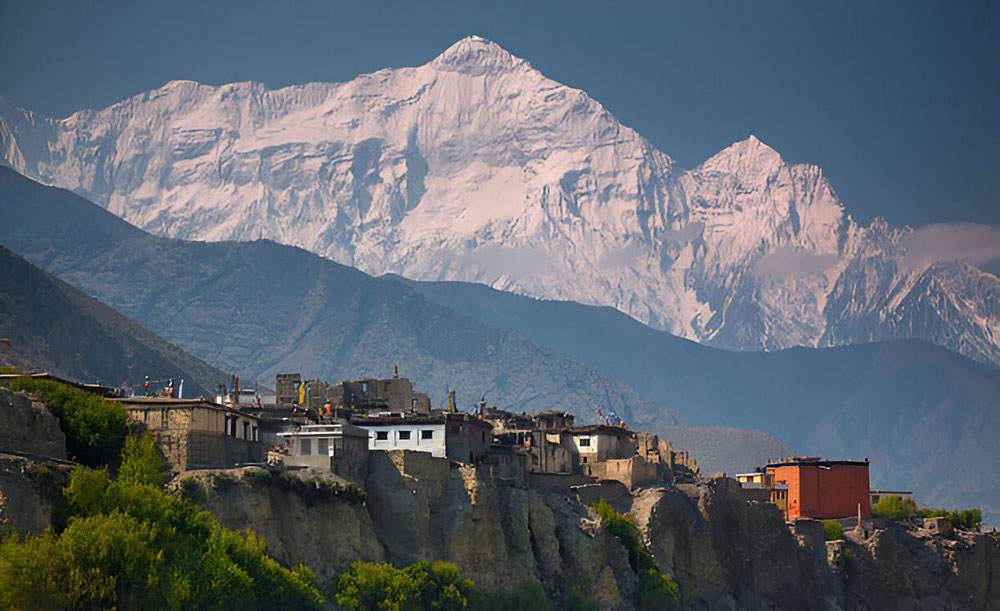
Mustang, on the Tibetan plateau, provides a unique cultural journey. The region is renowned for its ancient caves and monasteries, which date back centuries. Tours offer a blend of Tibetan and Nepali traditions in a remote and captivating setting.
In Mustang, visiting Lo Manthang, the ancient walled capital, reveals historic monasteries like Thupchen, Jampa, and Chhoede, filled with Buddhist art, relics, paintings and history since the 8th Century. The sky caves, carved into cliffs, contain a deep history of the Mustang Civilization.
Trekking through Mustang showcases breathtaking views of the Nilgiri, Annapurna, and Dhaulagiri ranges. Scenic villages along the way offer insights into Tibetan-influenced cultures and traditions. Festivals like Tiji, with traditional dances and rituals, enhance the cultural experience.
Mustang's geography includes the Kali Gandaki Gorge, one of the world’s deepest canyons. Trekking involves crossing high-altitude passes and observing diverse flora and fauna.
Additionally, the Mustang region is a pretty great choice for mountain biking in recent times.
Pokhara Tours

Pokhara, surrounded by natural beauty, offers many attractions. The city features Phewa Lake, where boating and visiting Tal Barahi Temple on an island are popular activities. Gupteshwor Cave and Davi's Falls add to Pokhara’s appeal.
Travellers can visit Bandipur on the way to Pokhara from Kathmandu or Chitwan. Bandipur’s traditional Newari architecture and cultural charm are best seen during the drive. For those flying into Pokhara, Bandipur can be a short detour, showcasing its scenic and historical sites.
Ghandruk, a charming village near Pokhara, provides a glimpse into traditional Gurung culture and stunning views of the Annapurna range. Accessible by a short trek or jeep ride, it offers a unique cultural experience.
Australian Camp and Dhampus are favoured for their scenic hiking trails. These areas offer panoramic Himalayan views and are perfect for short treks, blending natural beauty with local village experiences.
Lumbini Tours
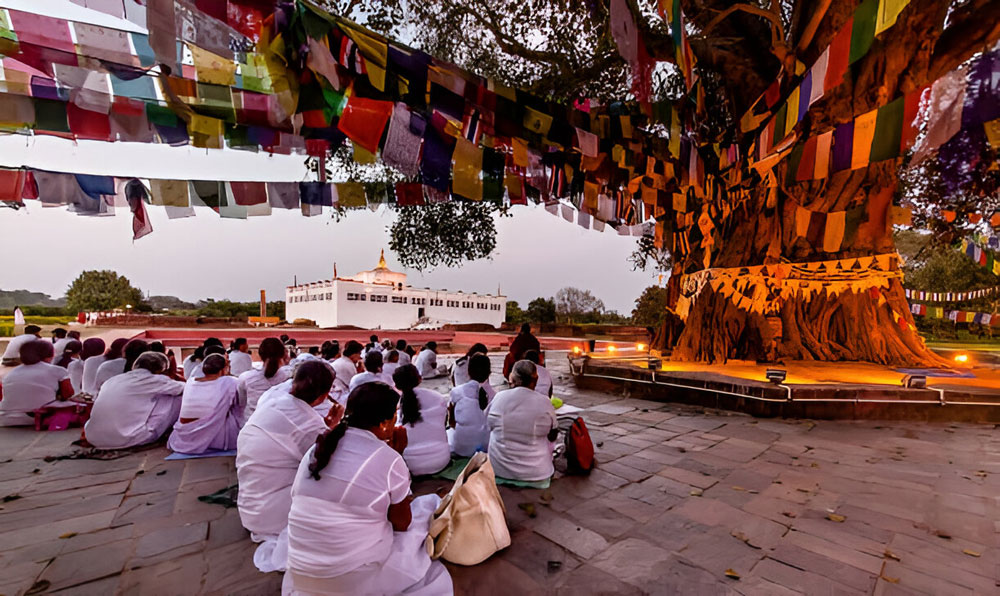
Lumbini is the birthplace of Lord Buddha and a UNESCO World Heritage Site. It offers a peaceful atmosphere and a deep spiritual experience.
In Lumbini, the Mayadevi Temple is the focal point. Here, you can see the exact spot where Buddha was born, marked by a sacred stone and ancient ruins. The Lumbini Garden, with its serene environment, is perfect for meditation and reflection.
The monasteries in Lumbini, built by countries like Japan, Thailand, and Nepal, offer a variety of architectural styles. Each monastery has its unique design and religious artefacts, providing insight into different Buddhist traditions.
Exploring the Lumbini Archaeological Site reveals ancient ruins, including the Ashoka Pillar, which commemorates Emperor Ashoka's visit. The site also includes the monastic zone, where you can stroll among the ruins and experience the historical depth of the area.
Trekking

Trekking and hiking in Nepal are a paradise for travellers. The diverse regions offer everything from challenging treks to simple day hikes, with spectacular mountain views. The Himalayan nation provides the opportunity to observe majestic peaks up close on every trip.
Annapurna Region: Known for its stunning landscapes and diverse trekking options. Major trails include the Annapurna Circuit, Annapurna Base Camp, Nar Phu Valley, and Ghorepani Poon Hill.
Everest Region: Famous for its high-altitude treks and iconic mountain views. Popular trails are Everest Base Camp and Gokyo Lakes.
Langtang Region: Offers beautiful valley scenery and rich cultural experiences. Notable trails include the Langtang Valley Trek and Helambu Trek.
Mustang Region: Features unique Tibetan-influenced culture and arid landscapes. Key trails are the Lower Mustang Trek and Upper Mustang Trek.
Kanchenjunga Region: Features the Easter Nepali culture of Rai and Limbus, alongside the tough terrains to hike on. Key trails are Kanchenjunga North and South Base Camp Treks.
Also, check, Best Hike in Nepal
Adventure Sports
Nepal is an adventure lover's paradise, offering a variety of thrilling activities. From high-altitude jumps to serene flights, the country provides exciting experiences for every kind of adventurer.
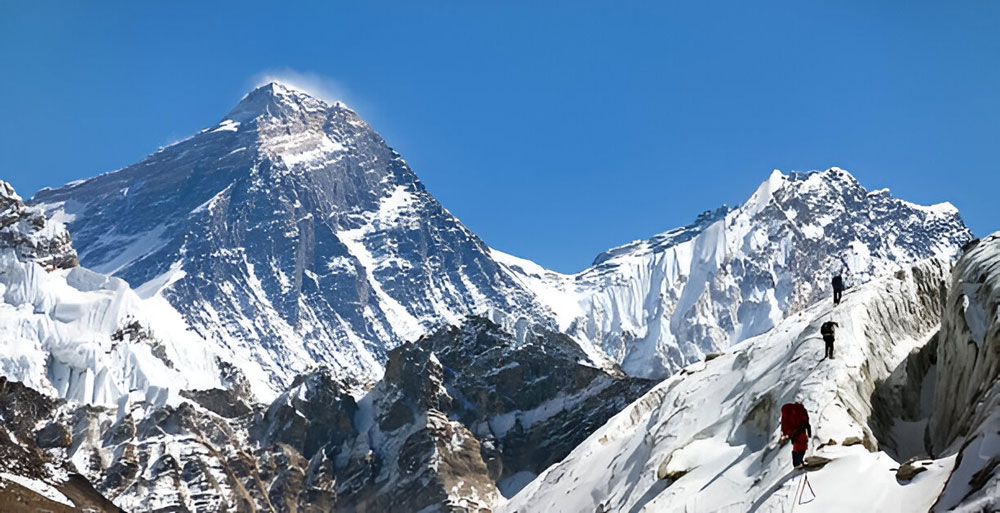
Bungee Jumping: The second highest bungee jumping in the world in Kusma with 228 meters of jump, you can have a great adventure. Additionally, The Last Resort in Bhotekoshi offers a thrilling 160-meter bungee jump over a deep gorge.
Ziplining: Pokhara features the world’s longest, highest, and steepest zipline of 1.8 kilometres with a majestic view of the Annapurna range from Sarangkot. However, other zip lines are also available in Kathmandu but shorter.
White Water Rafting: Major White River Rafting in Nepal includes Trisuli, Bhote Koshi, Upper Seti, and Kali Gandaki. With all the major rafting happening with Grade 3.5 and above, it is quite an adventure to do in the Nepali waters.
Paragliding: Paragliding in Pokhara lets you soar above Phewa Lake and enjoy fantastic aerial views of the valley and surrounding peaks. Additionally, in Kathmandu as well there are two paragliding spots; Chandragiri and Sankhu with amazing views.
Peak Climbing: For those interested in peak climbing, peaks like Island Peak and Mera Peak offer exciting yet accessible climbs, with stunning rewards. Additionally, there are around 33 peaks that can be climbed in Nepal.
Mountain Expedition: Serious adventurers can tackle major peaks like Everest, Annapurna, Dhaulagiri, Kanchenjunga and more providing the ultimate challenge and unparalleled Himalayan views.
Skydiving: In April 2024, there were a few experiments with skydiving in the Everest region. Thus, very soon, this activity will be another major attraction in Nepal.
Trip ideas for visiting Nepal
Nepal itinerary offers diverse trip options, each focusing on unique aspects of the country’s beauty and culture. Choosing the right trip can enhance your experience and provide valuable insights into Nepal's rich heritage and stunning landscapes.
Getting to the Base of Everest
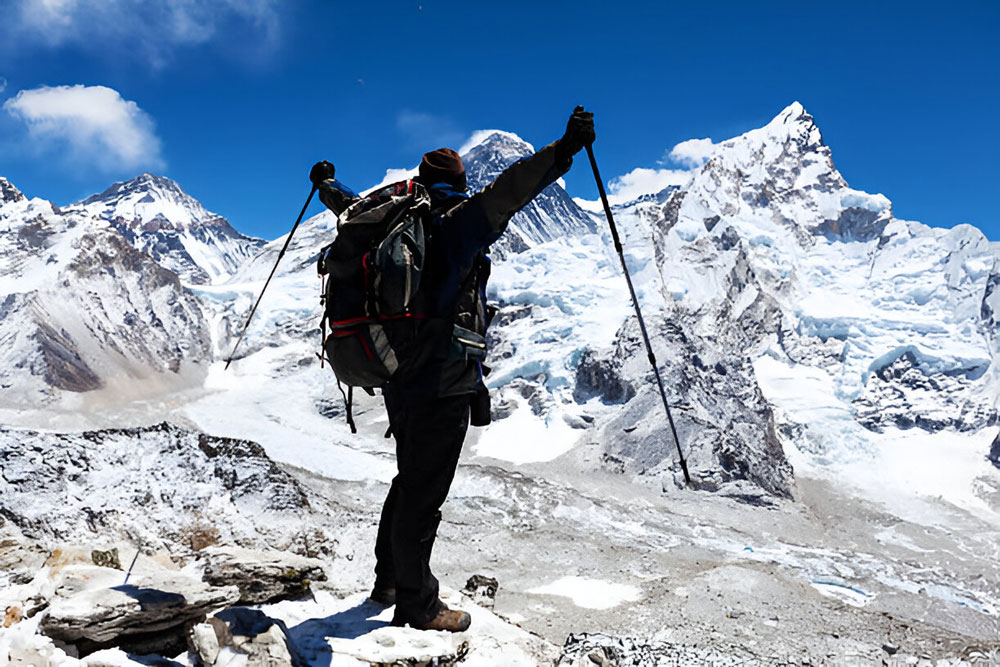
To see Mount Everest is one of the best dreams of travellers. Here are some best ideas to see it.
Everest Base Camp Trek
The Everest Base Camp trek is a classic adventure, typically starting from Lukla. This trek takes you through Sherpa villages, ancient monasteries, and lush forests. With each step, views of Mount Everest and other peaks become more breathtaking. The trek usually takes about 12-14 days, offering an immersive experience of the Himalayas and Sherpa culture.
The Everest Base Camp trekking can be even made a luxury. With the addition of luxury lodges in the Khumbu region, now trekkers can get a comfortable stay. If you are fascinated by luxury trekking with amazing facilities in the mountains then the Luxury Everest Base Camp Trek can be an option to look for.
Everest Helicopter Tour
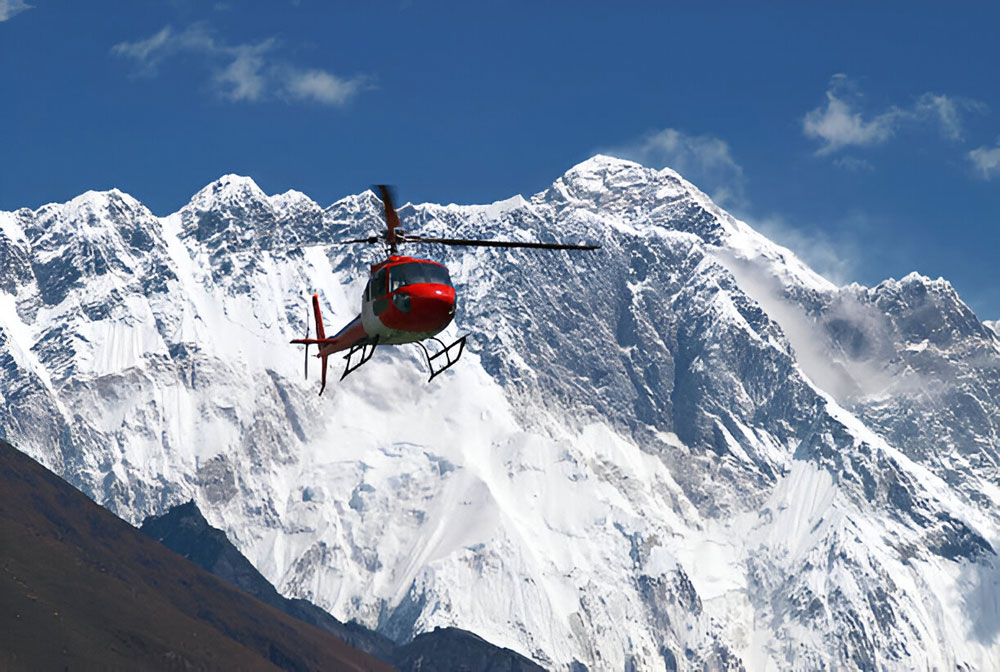
A helicopter ride over the Everest Base Camp is an efficient way to see the region's beauty. This tour lasts 4-5 hours and includes four landing points to enhance your experience. Stops include the Hotel Everest View in Khumjung, which offers accommodations and dining options for photography enthusiasts.
However, the landing does not occur at the base camp.
During the tour, you’ll explore Sherpa villages, get a close-up overfly view of Everest Base Camp, and enjoy panoramic sights from Kalapathar. The flight also includes landings at Lukla Airport and Pheriche.
For private flights with two passengers, a landing at Kalapathar is guaranteed. This journey provides stunning views of peaks like Makalu, Nuptse, and Lhotse, making it a convenient and luxurious way to experience Everest.
Luxurious overnight stay in the Everest Region
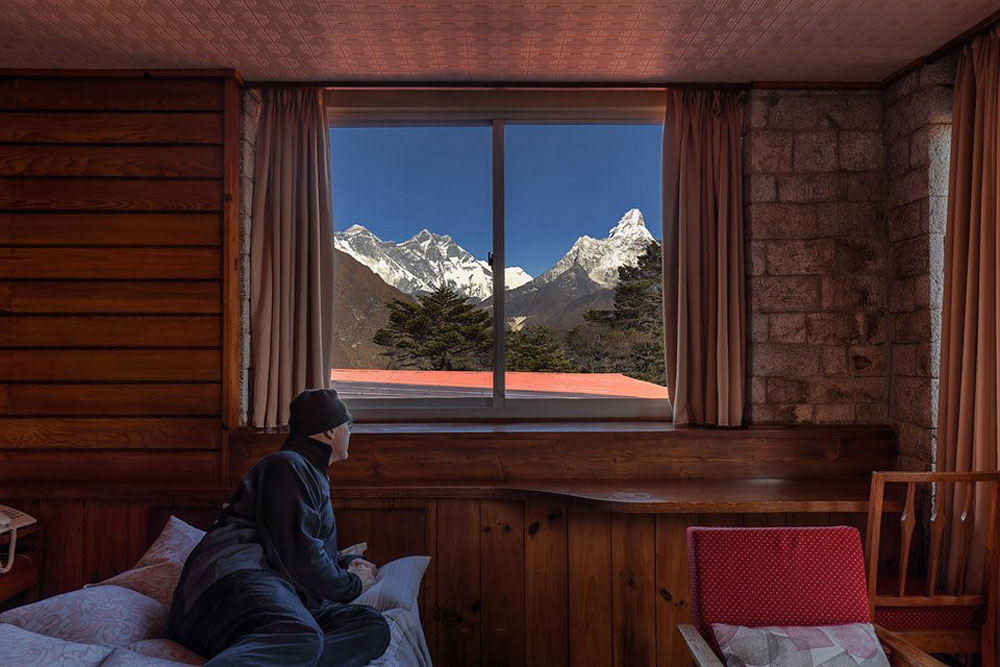
For a luxurious experience of Everest, consider a private helicopter tour with an overnight stay at Hotel Everest View. The journey begins with a helicopter flight from Kathmandu to Lukla, offering breathtaking views of the Himalayas. After a brief stop in Lukla, the flight continues to Pheriche and then toward Mount Everest, with options to land at Kala Patthar for close-up views of the world's highest peak.
The tour includes a visit to the renowned Hotel Everest View, where you’ll enjoy stunning panoramic views of Everest and other peaks. Here, you can relax in comfort, savour gourmet meals, and experience local culture by visiting nearby villages like Khumjung or Namche Bazaar.
The highlight is watching the sunrise over Everest from the hotel, a magical sight that turns the mountains golden. After breakfast, the helicopter returns you to Kathmandu. This 1-night, 2-day luxury tour offers an extraordinary blend of high-altitude adventure and comfort.
Customize your Luxury Overnight Stay at Hotel Everest View
Hiking the trail of Annapurna Circuit
The Annapurna Circuit is famous for its stunning landscapes and cultural richness. It provides incredible views of the Annapurna and Dhaulagiri ranges, along with the opportunity to explore traditional villages and diverse environments.
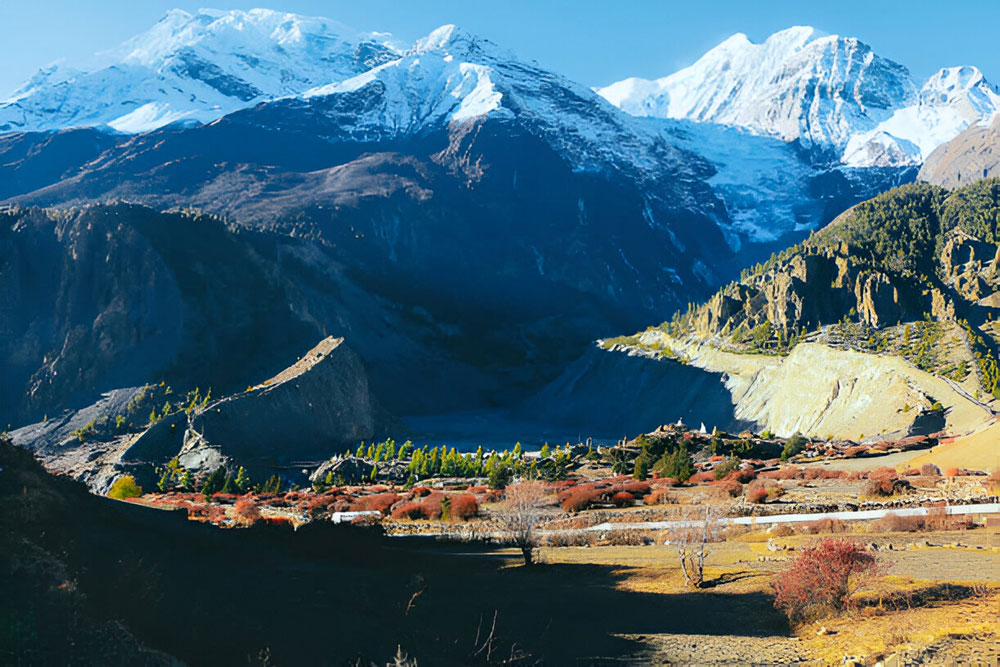
However, road construction has impacted parts of the trail, reaching as far as Manang and Muktinath. Previously the circuit used to be until Annapurna Base Camp, though now that is a different trekking trail.
To preserve the trek's unique experience, hikers now start from Dharapani. A drive from Kathmandu via Besisahar brings you to Dharapani in one day. This approach maintains the traditional trekking experience.
As you continue, you will pass through Manang and climb to Thorong La Pass, which stands at 5,416 meters. This high-altitude pass is a key highlight of the trek, offering spectacular panoramic views and a sense of accomplishment.
Experience the Tibetan Plateau in Upper Mustang
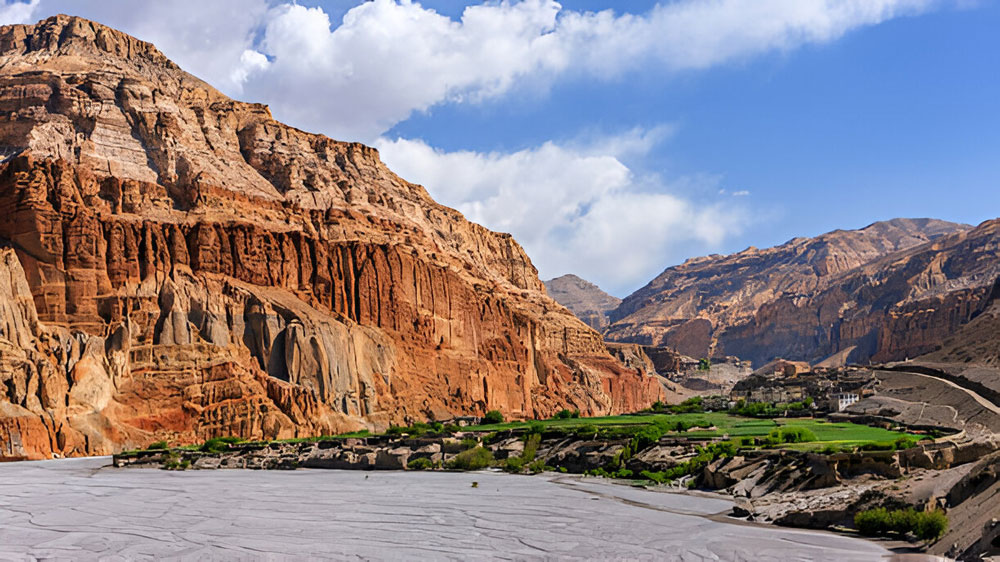
Upper Mustang, located on the Tibetan Plateau, is a treasure for cultural enthusiasts. This remote region offers a unique glimpse into a traditional Tibetan lifestyle, with its ancient monasteries, traditional villages, and dramatic landscapes. The area is often compared to Tibet due to its cultural and geographical similarities.
Travelers can explore the Upper Mustang through Jeep tours or trekking tours. Jeep tours provide a comfortable way to see key locations such as Lo Manthang, the ancient capital with its impressive palace and monasteries. Trekking tours, on the other hand, offer an immersive experience, allowing you to hike through the rugged terrain and interact closely with the local communities.
The culture here is rich with Tibetan influence, evident in the local festivals, prayer flags, and monasteries. Exploring Upper Mustang offers a rare opportunity to experience a blend of stunning natural beauty and traditional Tibetan culture.
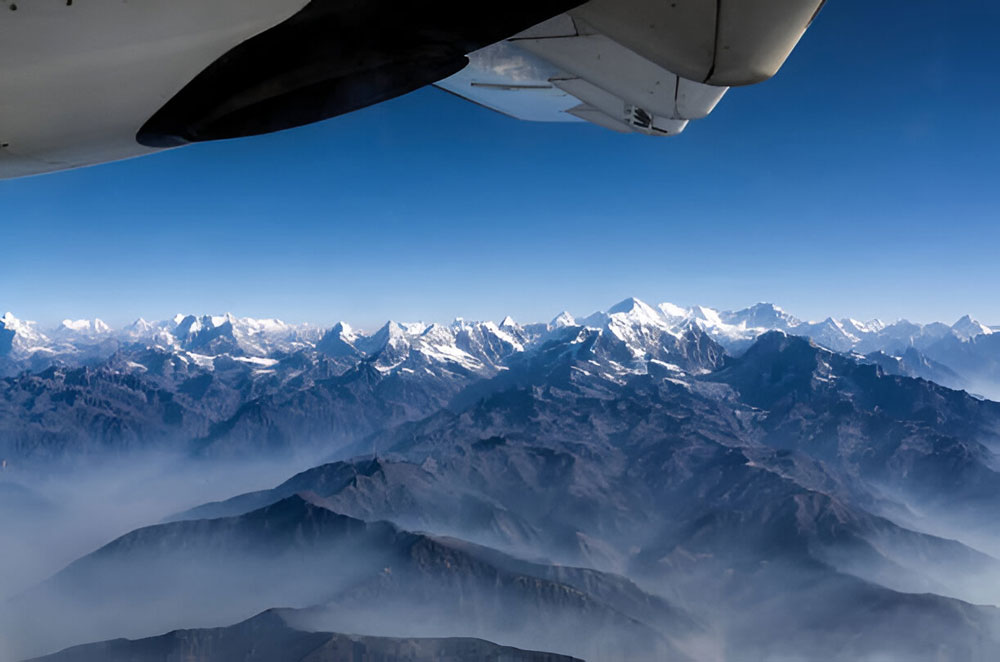
Travelling Nepal in Luxury
A luxury tour of Nepal offers a seamless way to explore diverse attractions. A breathtaking Everest Mountain Flight offers stunning aerial views of the Himalayas.
Upscale accommodations in Pokhara provide a chance to explore nearby Bandipur and Ghandruk in comfort. High-end safaris in Chitwan National Park allow you to spot rhinos and tigers. Lumbini's serene sites, including the Mayadevi Temple, offer a peaceful retreat.
This all-inclusive package is perfect for those wanting to see mountains, cities, and wildlife in one luxurious visit. From the High Himalayas to the lowlands of Lumbini and Chitwan, the tour covers all of major Nepal. Also, you can customize this trip to choose from any location you would like to go to.
Involve in Day Trips
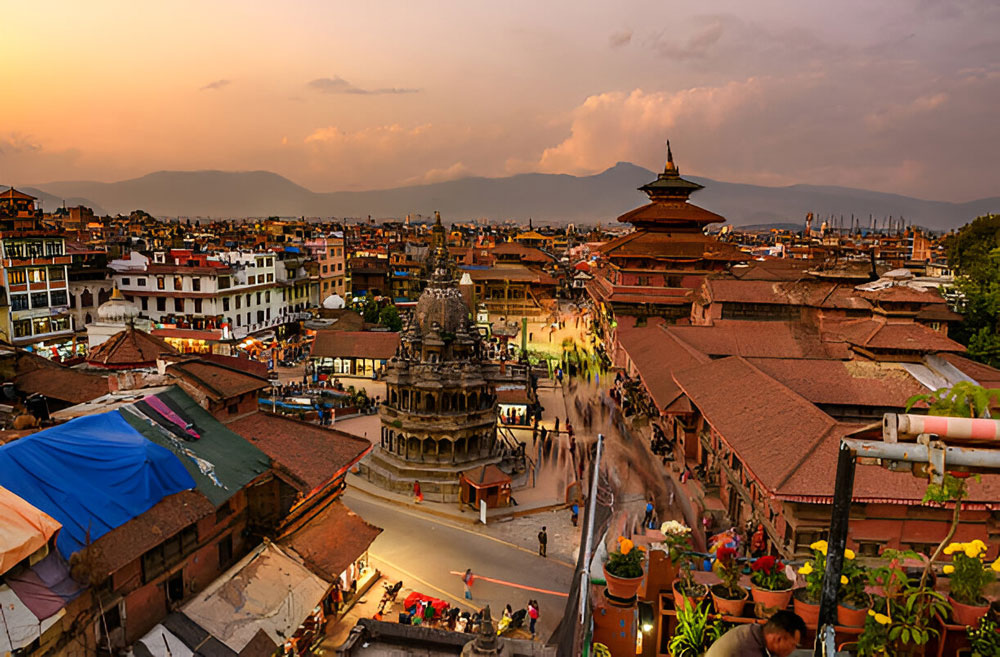
Day trips in Kathmandu offer a great way to explore the city and nearby areas. Wander through Kathmandu's historic sites like Pashupatinath Temple, Boudhanath Stupa, and Swayambhunath Stupa. Discover Kathmandu Durbar Square and enjoy its ancient architecture and vibrant local life.
For those interested in hiking, nearby areas provide beautiful options. The Sundarijal to Chisapani hike offers scenic views of forests and hills, with Chisapani providing a glimpse into local village life. Shivapuri Peak presents panoramic views of the Himalayas and the Kathmandu Valley.
Nagarkot is known for its stunning sunrise views over the mountains. These day hikes provide a refreshing escape from the city and an opportunity to experience Nepal’s natural beauty up close.
Best Time to Travel Nepal
Nepal's diverse climate offers unique experiences throughout the year. Each season has its own charm, making it suitable for different interests.
Spring and Autumn

Spring (March to May) and autumn (September to November) are the best times to visit Nepal. The weather is clear and mild, with temperatures ranging from 15°C to 25°C. These seasons provide excellent conditions for trekking, with stunning mountain views and blooming rhododendron flowers in spring. Autumn offers crisp air and clear skies, perfect for sightseeing and outdoor activities.
Winter
Winter (December to February) brings cooler temperatures, especially in the mountains. While the weather can be chilly, it’s still a great time to visit lower-altitude areas. Cities like Kathmandu and Pokhara remain pleasant. The snow-capped peaks offer breathtaking views, and fewer tourists make for a quieter experience.

Summer
Summer (June to August) is the monsoon season, bringing rain to Nepal. This time is ideal for those who enjoy lush green landscapes and fewer crowds. The rain enhances the beauty of the countryside, and the temperature is warm, ranging from 20°C to 30°C. Monsoon also supports vibrant flora and is perfect for exploring wetland areas and enjoying the greenery.
Nepal’s festivals add a unique charm to travel. Timing your visit to coincide with these celebrations can provide a richer experience.
Mass Festivals
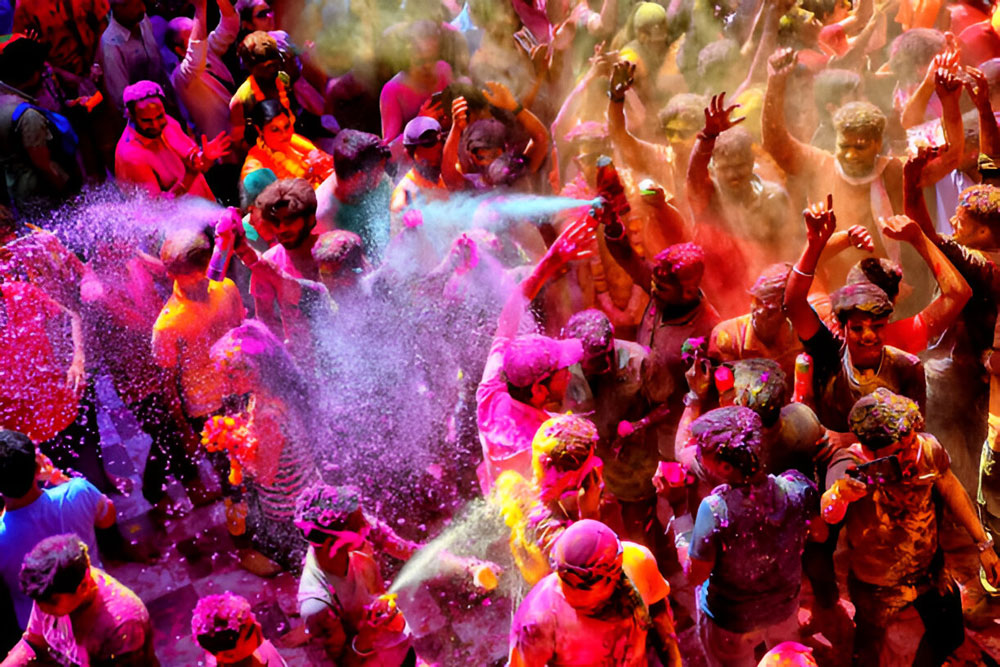
Mass festivals like Holi, Shivaratri, Lhosar, and Chhath are vibrant and widely celebrated. Holi (March) involves colourful powders and joyous celebrations. Shivaratri (February) is dedicated to Lord Shiva, with temples filled with devotees. Lhosar (February/March) marks the Tibetan New Year with cultural events and feasts. Chhath (October/November) is celebrated with rituals near rivers and ponds. These festivals showcase Nepal's diverse cultural heritage.
Family Festivals
Dashain, observed in September or October, is a major Hindu festival featuring animal sacrifices to honour Goddess Durga. It is a time for family gatherings and festive feasts. Tihar, also known as Deepawali, occurs in October or November and focuses on celebrating the bonds of brotherhood and sisterhood. It includes rituals and festivities that highlight familial connections and cultural traditions.
Local Experience Festivals

Local experience festivals include Tiji, Udhauli, Ubhauli, and Jatras. Tiji (May) in Mustang features traditional dances and rituals. Udhauli and Ubhauli (November/May) are harvest festivals celebrated by the Kirat community with unique ceremonies. Jatras, occurring throughout the year, are local processions and street festivals in cities like Kathmandu and Bhaktapur. These festivals offer insights into local traditions and community life.
Other Useful Information to Travel Nepal
Nepal’s rich cultural heritage is deeply rooted in its diverse traditions and customs. Respect for local customs, especially in religious sites, is important. Greetings often involve a slight bow with hands pressed together in a prayer-like gesture, known as "Namaste."
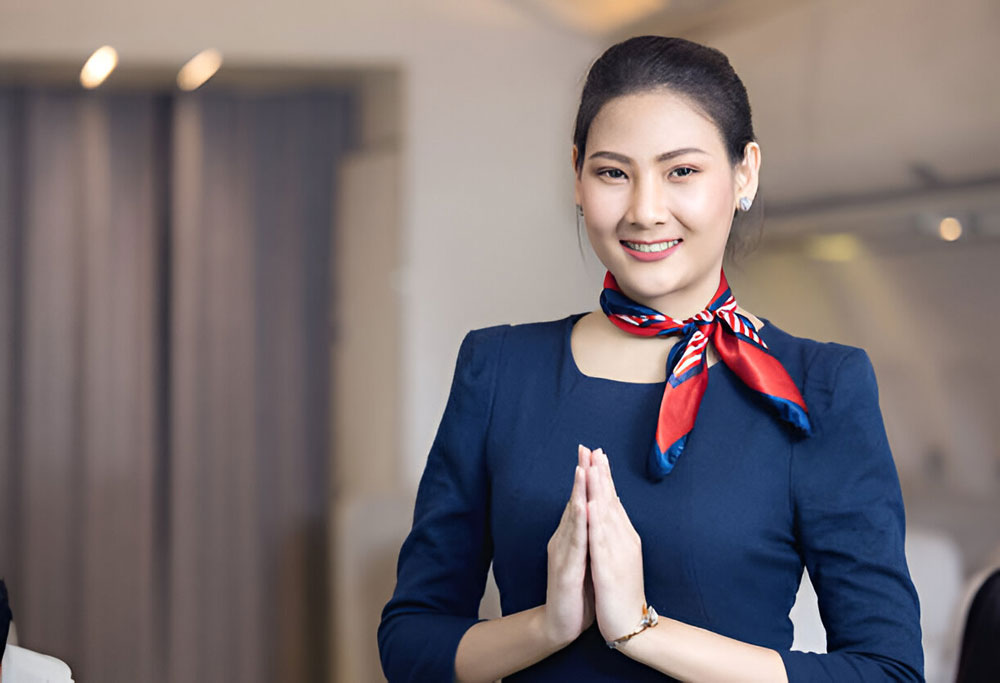
Modest clothing is recommended when visiting temples and monasteries. Nepalese people are generally warm and welcoming, and learning a few basic phrases in Nepali can enhance your travel experience.
Visa Process
Travelling to Nepal is straightforward with a simple Tourist visa process. You can obtain a visa on arrival at the Tribhuvan International Airport in Kathmandu. The process involves filling out a form and paying the visa fee.
Alternatively, you can apply for a visa online before your trip through the Department of Immigration’s website. This online application is convenient and can save time upon arrival.
Language and Currency
Nepali is the official language of Nepal, and English is commonly understood in tourist areas and cities. In rural areas, communication might be more challenging, but locals are generally helpful. Additionally, as you can easily hire a guide with us, you have a hassle-free travel here.
The local currency is the Nepalese Rupee (NPR) issued by Nepal Government. In cities like Kathmandu and Pokhara, digital payments and credit cards are widely accepted, though cash is still useful, especially in remote villages where cash transactions are more common.
Book a hassle-free Travel to Nepal
At Himalayan Scenery Treks and Expedition (HST), we make your Nepal trip seamless and enjoyable. With 20 years of experience, we handle every detail of your journey. Whether you seek a luxurious experience with top-notch service or a simple, well-organized adventure, we cater to all your needs.
From arranging luxury stays with white-glove service to planning every aspect of your trip, HST ensures a hassle-free travel experience. With us, you do not have to worry about how to travel Nepal.
FAQs
We have collected the most asked questions from your end to answer below.
What is the best way to travel in Nepal?
Travelling in Nepal can be done efficiently by flying for long distances and using local buses or private cars for shorter routes. For trekking, guided tours or self-guided hikes offer excellent ways to explore the mountains. Many travellers also use domestic flights to save time on long journeys.
Can US citizens travel to Nepal?
Yes, US citizens can travel to Nepal. They need a passport valid for at least six months and a visa. The visa can be obtained on arrival at the airport or online before travel.
How do I get to Nepal from the USA?
Travelers from the USA can reach Nepal by flying to Tribhuvan International Airport in Kathmandu. Direct flights are limited, so connecting flights through major hubs like Dubai, Doha, or Istanbul are common.
Is it safe to travel to Nepal now?
Nepal is generally safe for tourists, but it's important to check the latest travel advisories and health guidelines. Natural disasters and political demonstrations can occasionally affect travel plans, so staying informed is crucial.
What is the best way to travel to Nepal?
The best way to travel to Nepal is by flying into Kathmandu, the main international gateway. While direct flights are available from some major cities, many travellers use connecting flights through other international hubs. Once in Nepal, local flights, buses, and private cars are common for getting around.
Can I travel to Nepal now from the USA?
Yes, travel from the USA to Nepal is possible. Ensure you have a valid passport and visa. Check for any specific travel restrictions or entry requirements due to health or safety concerns before planning your trip.
How do you get to Nepal from the UK?
From the UK, travellers can either fly to Doha, Dubai, or New Delhi directly. From there you can take a direct flight to Kathmandu. Choose the airlines according to your choice and budget. While you land in Kathmandu, the Himalayan Scenery Treks will take care of you afterwards.
Do UK citizens need visa for Nepal?
Yes, UK citizens need a Visa for Nepal. You can apply online via the Immigration Department of Nepal's website or get an on-arrival one when you land in Kathmandu.
Can you fly direct to Nepal from the UK?
No, you cannot fly directly to Nepal from the UK. You can use the stopovers for the flight to get to Nepal from New Delhi, Doha, or Dubai.
How much will a trip to Nepal cost?
The cost of a trip to Nepal varies widely based on travel style and duration. Budget travellers may spend around $50 per day, including basic accommodation and food. Mid-range trips could cost $100 to $150 per day, while luxury trips might exceed $200 or more per day, covering upscale accommodations and guided tours.

